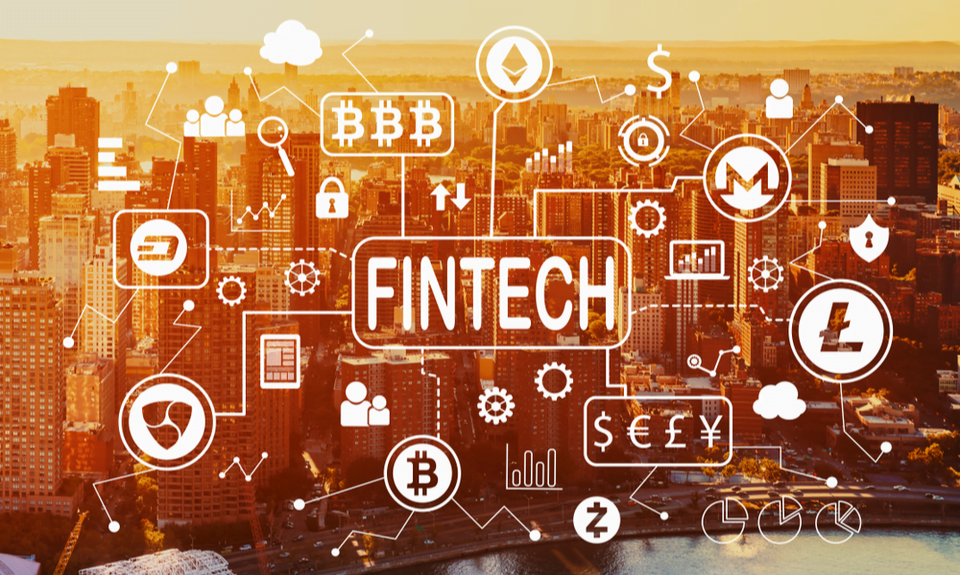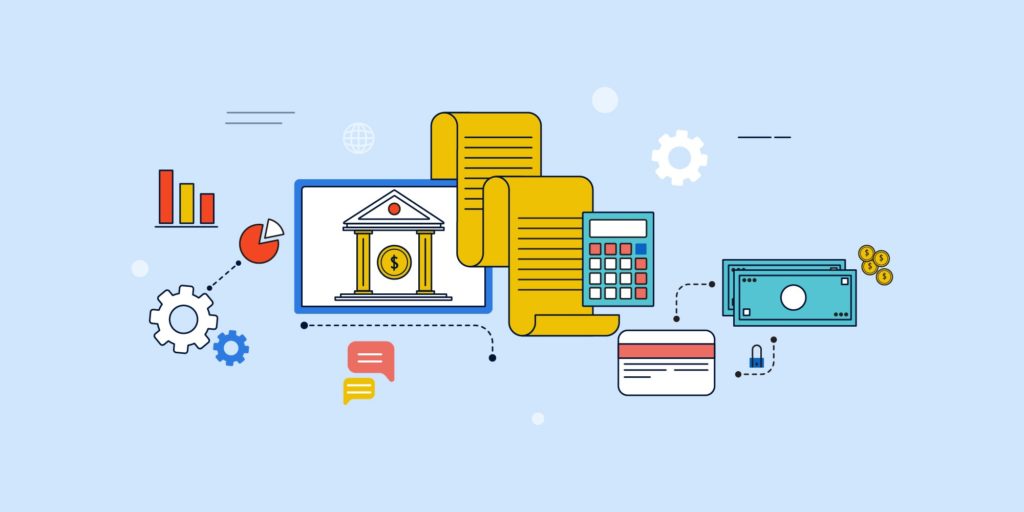How the battle between fintech vs banks could pan out in India

How the battle between fintech vs banks could pan out in India
Fintechs have dominated digital funds, with privately held fintechs spearheading the formation of the digital fund sector in India and driving the country’s rapid growth and expansion of monetary inclusion. The advent of the Unified Payment Interface, in particular, has aided the expansion of digital monies.
According to a new analysis by Moody’s Investors Service, fintech fee firms in India have led the country’s rapid growth of digital funds. Still, their dominance may not transfer to aggressive incentives to expand into other financial services. Furthermore, India’s central banks have expanded their digital product offerings to compete with fintech.
“Their dominance may not result in advantages over banks,” says Srikanth Vadlamani, a Moody’s Vice President and Senior Credit Officer. “The UPI’s open structure implies that a large customer base does not imply that a specific service provider is more aggressive than others on the system.”
In addition, the private-sector banks and the country’s central bank, the State Bank of India (SBI, Baa3 stable, ba2), have expanded their digital product offerings in a variety of areas, which their customers are enthusiastically adopting. According to the research, the banks will be able to stave off competition from fintech outside of the fee sector.
According to Moody’s, bank margins will be squeezed as competition grows, but the overall market may even expand. Fintechs, on the other hand, will continue to try to expand into many financial services, particularly private loans and loans to small businesses, according to the report.
“However, public sector banks, except SBI, have relatively weak digital products and will be harmed by increased competition.” Many fintech will continue to venture into other financial services, particularly personal loans and loans to small businesses, putting pressure on banks’ margins. “But, as technology generates additional opportunities, the entire market will expand, allowing banks to offset margin pressure with business development,” according to Moody’s assessment.

About Fintech
The words “financial” and “technology” are combined to form the phrase “fintech.” Fintech refers to any organisation that employs technology to improve or automate financial services and operations. The word refers to a fast-expanding industry that provides a variety of services to both consumers and corporations. From mobile banking to insurance to cryptocurrency and investment apps, fintech has an almost limitless number of possibilities.
Many traditional banks are:
- Proponents and users of the technology
- Aggressively investing in
- Acquiring
- Collaborating with fintech companies because it is easier to provide digitally-savvy customers with what they want while propelling the industry forward and being relevant.
WHAT IS A FINTECH COMPANY?
Fintech firms incorporate cutting-edge technologies into traditional financial services to make them safer, faster, and more efficient. Fintech is one of the fastest-growing technology industries, with companies developing solutions for practically every element of finance, from payments to loans to credit scoring and stock trading.
How does it work?
Fintech isn’t a brand-new industry; it’s just exploded in popularity.
The inner workings of financial technology vary from project to project and application to application. In some of the most recent breakthroughs, machine learning algorithms, blockchain, and data science are being used to handle everything from processing credit risks to running hedge funds. There is now a whole area of regulatory technology dubbed “regtech” that is designed to assist businesses like fintech in dealing with the complex world of compliance and regulatory difficulties.
Concerns concerning cybersecurity in the fintech industry have grown in lockstep with the industry’s expansion. Because of the massive global rise of fintech organisations and markets, vulnerabilities in fintech infrastructure have become more visible, making it a target for cybercriminals. Fortunately, technology is improving, reducing existing fraud threats and reducing the danger of new ones.

FINTECH EXAMPLES & USES
Traditional firms and banks continuously adopt fintech services for their own objectives, despite the industry conjuring up ideas of startups and industry-changing technologies. Here’s a quick look at how the financial services business is disrupting and boosting some aspects of the industry.
Banking
Mobile banking is a significant part of the fintech industry. Consumers are increasingly wanting simple digital access to their bank accounts, particularly on mobile devices, in the realm of personal finance. Because of the rise of digital-first banks, or “Neobanks,” almost all major banks now provide mobile banking.
Neobanks are banks that do not have physical branches and instead rely on a wholly mobile and digital infrastructure to supply customers with checking, savings, payment services, and loans. Neobanks include Chime, Simple, and Varo, to name a few.
Blockchain & Cryptocurrency
The emergence of cryptocurrencies and blockchain is occurring in tandem with fintech. The developments in bitcoin technology can be credited to both blockchain and fintech. Both blockchain and fintech are accountable for advancements in cryptocurrency technology.
Despite the fact that blockchain and cryptocurrency are two distinct technologies that fall outside of the area of fintech, both are potentially required to create viable fintech applications. Some of the most important blockchain firms to be aware of are Gemini, Spring Labs, and Circle, while cryptocurrency-focused companies include Coinbase and SALT.
Investment & Savings
In recent years, fintech has increased the number of investment and savings apps. While these applications take different approaches, they all use a combination of savings and automatic small-dollar investing ways to expose users to the markets, like fast round-up contributions on purchases.
Machine Learning & Trading
The Holy Grail of finance is to foresee where markets will go. This AI subset’s strength comes from its ability to process massive amounts of data using algorithms meant to discover trends and threats, providing customers, corporations, banks, and other organisations with an understanding of investment and purchasing risks earlier in the process.
Payments
Fintech is highly adept at moving money around. “I’ll Venmo you” has taken over as a replacement for “I’ll pay you later.” Venmo is, of course, a popular mobile payment app. The way we do business has altered as a result of payment businesses. Sending money online anywhere in the world is now easier than ever. Popular payment firms include Zelle, Paypal, Stripe, Square, and Venmo.
Lending
Fintech is also revolutionising credit by automating risk assessment, accelerating approval processes, and making loans more accessible. Hundreds of millions of individuals worldwide can now apply for a loan using their mobile devices, and new data points and risk modelling skills allow credit to be extended to previously underserved groups. Individuals can also request credit reports as many times as they like each year without impacting their credit score, making the entire lending world’s backend more transparent for all. Three significant credit firms are Tala, Petal, and Credit Karma.
Insurance
Despite the fact that insurtech is quickly becoming its own industry, it still falls under the financial umbrella. Because insurance has been a late embrace of technology, a number of fintech companies are partnering with traditional insurers to assist automate operations and expand coverage. From mobile vehicle insurance to health insurance wearables, the industry is undergoing significant changes.

Fintech’s advantages and disadvantages
Advantages
- It generates revenue
Fintech is perhaps the most apparent of them. Still, it has the potential to generate enormous sums of money by lowering the cost of trading with capital or by developing new outlets and markets. A fintech software development firm assists so-called “non-bank” individuals in joining the social economy, provides access to credit and demands fair contractual conditions.
The advancement of commercial technology impacts almost every aspect of life and business, and the potential for wealth creation appears limitless. It’s all about:
better-running living resources;
designing totally unlike ones.
Fintech democratises the economics
Whether it’s autonomous trading trades or modern class perfections, not everyone has the opportunity to participate in the economy or gain access to the same economic opportunities. It’s sometimes the result of perception, but most of the time, it’s just a game of chance. The community and time of your birth and the health of the surrounding economy limit your options.
The community and time of your birth and the health of the surrounding economy limit your options.
- Fintech promotes clearness
The financial industry is rife with contentious initiatives. Rarely do we see advertisements, like the infamous Panama Papers, that explain what’s going on behind our backs. Nonetheless, the global financial climate is so complicated that there are numerous locations to hide your unethical action. There are not enough people to connect all of the dots.
Disadvantages
- Some personalities are left behind
There will be losses as a result of every technological change. Of course, industrialisation is a source of concern on all fronts. With the advancement of machine learning and robotics, it is becoming increasingly likely that human labour demand will decrease drastically. This may or may not pique your curiosity.
When it comes to financial technology, there is a trend toward requiring fewer people to implement financial services. Fintech’s expanding activity also opens the door for certain people to become victims of it. It’s normal that some people will lag behind when they have to rush to stay in one place.
- It can provide to a global imbalance
Fintech is inextricably linked to the advancement of digital technologies. Broadband internet, data stations, cellphones, mobile wireless access, and other advanced current base are required to work.
The issue is that a large portion of the world’s population lacks broadband access. The thought of owning a smartphone or paying for Internet access is ridiculous in some nations. This means that the individuals who live in these places will miss out on any of Fintech’s cost-effective advantages.
The drawback to this dilemma is that the cost of these technologies continues to fall. These days, you can get a smartphone for thirty dollars that serves the same basic functions as a high-end phone. However, it is slower and less enjoyable to use. We’ve witnessed a technical “jump” in markets like India, where new technologies are built without relying on old ones.
- It has the potential to jeopardise privacy.
Fintech today frequently only works because it substantially digitises our way of life. When you use an app like Uber or rent an Airbnb, you gain a lot of information. Those with access to your financial information might also acquire a picture of your actions, even more critical. Who are your countrymen, and what do you recommend to them?
The prospect of receiving money from the Dodo can have a chilling effect on people’s actions. But I’d rather keep my identity hidden. There is a long list of legal and specific activities that should not be written down, from purchasing adult pleasure to donating money for specified objectives.

Fintech in India: Facts and Figures
With the rise of digital payments, cryptocurrencies, blockchain technology, and other innovations in the previous decade, the global financial scene has changed dramatically. India has adapted quickly to the realm of financial technology as the country with the second-largest internet user population. Enterprises and politicians concentrated mainly on payments, with payments accounting for roughly 20% of all domestic FinTech companies.
The banking sector was one of the first to focus on digitalisation because of its global links. FinTech (financial technology) arose from this rich environment for technical innovation. This market has accelerated in the previous decade, thanks to startups like Ant Financial (China), Paytm (India), and Stripe (Ireland/US). The Indian government has had various political motives to favour financial sector digitalisation.
Demonetization, which resulted in a drop in cash value in circulation in India, was adopted in December 2016 to combat corruption and promote digital payments. The advent of government e-services paired with digital payments, such as the Jan Dhan Yojana, has aided in expanding financial services. Furthermore, FinTech solutions provided greater flexibility in serving rural people than traditional banks.
The flag bearers of the Indian FinTech field have been digital payment systems. The Reserve Bank of India and the Indian Banks’ Association established the National Payments Corporation of India (NPCI) to provide critical infrastructure for numerous payment systems. The widely used Unified Payments Interface (UPI), which over 200 banks support, and the card scheme RuPay, the domestic alternative to Mastercard, Visa, and UnionPay, are among the various payment systems used in India.
The rise of Indian FinTech start-ups coincided with increased overseas investors and a significant increase in private equity and venture capital investments in the Indian market. Despite the effects of the coronavirus (COVID-19) epidemic, FinTech businesses received over one billion dollars in PE/VC funding in 2020. One97, Paytm’s parent company, was one of the most valued FinTech startups in the world.
One of the most potential FinTech categories for the future is digital financing. Even before the coronavirus (COVID-19) epidemic hit India hard, there were growing demand from people and micro, small, and medium businesses for comparably cheap loans with simple application processes (MSME). One of the pillars of the Indian economy is the MSME sector. If the sector’s credit demand can be met in the following months, it will likely lead the economy back from the brink.

Ways in which fintech is transforming banking in India
In India’s financial services industry, there is a popular saying that “banks are attempting to be fintech, and fintech are trying to be banks.” While this may be a competition between traditional and non-traditional players, the real winners are the customers!
Because each player is attempting to meet a growing need for inclusive financial services, customer expectations and the business need to cut costs while providing end-users faster, safer, and less expensive services.
Fintech was initially coined in the twenty-first century to define the technology employed in established financial institutions’ back-end systems. Fintech, on the other hand, has grown to encompass a wide range of sectors and industries, including education, non-profit fundraising, investment management, and much more.
In the first half of this year, India’s fintech startup ecosystem saw a 5.8x increase in capital inflow, reaching $4.6 billion in funding across 160 acquisitions.
However, as India’s banking industry undergoes significant disruption and change due to this fintech, the country’s banks are also changing. To keep up with the new generation of financial players, they actively invest in digital technologies and services.
Simultaneously, the government has taken several steps to help this transformation forward, including social service provisions, transfers and transactions, and formal banking. India’s rapidly expanding digital citizenry is increasingly demanding that banks keep up with fintech and leapfrog them by developing uniquely Indian products, services, and business models.
While the fintech revolution has been confined to India’s larger Tier 1 city throughout the years, however, the COVID-19 pandemic and increased digital penetration have brought fintech to India’s smaller towns and cities.

Fintech trends
Globally, the Financial Technology (Fintech) business has evolved from being the new kid on the block to becoming the norm in financial services during the last decade. The barriers between technology and business are becoming increasingly blurred, and both startups and traditional banks have recognised the value of technology innovation. They are using it to develop new goods and services for their clients.
Here are some of the trends that are causing a significant change in the sector and are likely to continue to do so in the future:
1. FinTechs, banks, and other corporate behemoths are racing to establish India’s first genuinely complete financial services SuperApp, a concept that gained traction following the success of Gojek (Indonesia), Alipay (China), Rappi (Latam), and Revolut.
2. Buy Now Pay Later and credit line disbursal to niche groups are rethinking credit, allowing Indians to go beyond standard credit cards and access digital credit at the moment of purchase.
3. InsurTech is driving product innovation and digital distribution, increasing insurance product penetration while creating speciality solutions for employers and young millennials.
4. Digital lending, one of the most well-funded Fintech business models, is maturing, with a greater emphasis on collections.
5. Neobanks are gaining traction by providing hyper-personalised banking services to tech-savvy customers. Accessibility, numerous cost-effective banking and financial operations under one umbrella are all features and offerings of neobanks. Some neobanks are developing speciality solutions for blue-collar workers and underserved thin-file MSMEs, which is the way to go.
6. Wealth/Invest-tech was a pleasant surprise at COVID. Through inclusive and low-cost services, it is altering the investment environment and bringing many first-time stock investors into the market.
7. Cryptocurrencies: While there has been much discussion about whether cryptocurrency trading is legal in India, banks have always avoided this market. According to the most recent information about the Bitcoin Bill 2020, the government intends to bring cryptocurrency investments under taxation rather than outright prohibiting them, which might be viewed as an opportunity for many growing fintech companies.
8. Banking as a Service (BaaS), embedded banking, and API/Smart API banking development enable any organisation (financial or non-financial) to add Fintech services and expand the ecosystem. This also encourages service cross-promotion across other channels.
9. After millennials, MSME is the new battleground for Fintech. Startups and institutions are vying for a piece of this lucrative industry. The adoption of digital by MSME has accelerated as a result of Covid19, putting this market open for disruption.
10. Digital payment (such as payment gateways) attracts significant investment and has the highest number of companies in the IPO and unicorn queues. The battleground has shifted from issuance to acquisition. With lower margins, players find new methods to make money by cross-selling other financial services using payment as a hook.
In India, the Fintech business has evolved at a breakneck pace. Still, it has had its share of setbacks and obstacles, including data security and privacy concerns, a wide range of adoption, fast-changing regulations, and a lack of financial literacy and awareness.
The Indian fintech business is not just one of our economy’s most dynamic areas, but it’s also being watched around the world! A variety of fintech products will find mainstream adoption in the near future, with most of them in banking, thanks to services backed by cutting-edge technology such as blockchain, artificial intelligence, machine learning, and data analytics. And, given the present rate of innovation, a product that has yet to be introduced or is in the early stages of development could become the backbone of certain financial services in the coming years.
edited and proofread by nikita sharma




